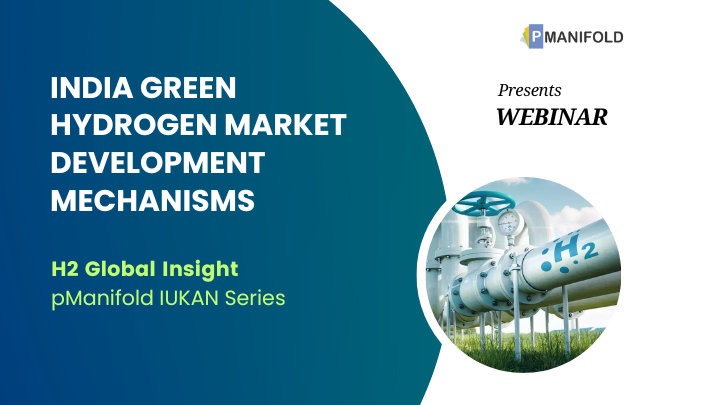India with the aim to achieve net zero by 2070 has set ambitious climate goals to tackle the growing issue of GHG and mitigate climate change. Hydrogen is emerging as a crucial element in achieving these goals due to its potential as a clean and sustainable energy carrier[1].
Recognizing this, Indiahas taken significant initiatives to enhance the use of hydrogen in the country. One such initiative is the launch of the National Green Hydrogen Mission (NGHM) with the aim to achieve 5 MMTPA[2] of green hydrogen by 20303 and become a green hydrogen production and export hub. The initial financial outlay for the mission is INR 19,744 crore, out of which 89% is allocated for SIGHT4 Program, 7% for Pilot Project, 2% for R&D and 2% for other mission components.
Under the SIGHT[3] program, MNRE[4] announced two distinct financial incentive and implementation mechanisms. These are for i) Electrolyser Manufacturing and ii) Green Hydrogen Production, covering supply-side and demand creation incentives respectively.
Scheme 1, with a capital outlay of Rs 4,400 Crore over 5 years, incentivizes Electrolyser Manufacturing, emphasizing indigenization, technology, efficiency, and local sales. It promotes continuous improvement through performance-linked incentives, driving advancements in electrolyzer technology, while fostering competition and diversity with multiple OEMs.
Scheme 2, with a capital outlay of Rs 13,090 Crore over 5 years, incentivizes Green Hydrogen Production. It includes a separate tranche for biomass, promoting distributed production and diverse feedstock utilization. Wide eligibility criteria allow small to midsize companies to participate, fostering sectoral inclusivity. The scheme emphasizes monitoring transparency and accountability, building trust in the process.
In this Webinar, we shall focus on:
1) Technology Roadmap of Alkaline & PEM Electrolysers and Design & Performance Improvements
2) Cost Economics of Electrolyser Manufacturing and GH2 Production
3) Market Needs and Growth Opportunities for GH2 – National Consumption and Exports
4) Indigenization Potential and Roadmap for Electrolyser Manufacturing in India
5) Leveraging MNRE Announced Mechanisms and the Need for a Supporting Ecosystem and Measures
Join us as we uncover key insights and strategies to drive India’s hydrogen objectives and accelerate the transition towards a sustainable future. This webinar will specifically focus on the development of the India Green Hydrogen Market, providing valuable insights and serving as a precursor to the upcoming Conference on Green Hydrogen 2023, scheduled from 5th to 7th July’ 2023 in Delhi.
[1]Harnessing Green Hydrogen, NITI Aayog, 2022
[2] MMTPA: Million Metric Ton per Annum
[3] SIGHT – Strategic Interventions for Green Hydrogen Transition
[4] Ministry of New and Renewable Energy
Our Speakers-
Kiran Kumar Alla – Green H2 Market Development, Plug Power
Aravind Kumar Chandiran – Associate Professor, IIT-Madras
Viswanathan Mahadevan – MD at RENSOL POWER PRIVATE LIMITED
Key Takeaways-
- Achievable cost reduction targets for Alkaline electrolysers by 2030: 15-20%. PEM is still under maturing pathways with higher potential for cost reduction: 25-35%. Major targeted cost reductions can be achieved from the material and the DC side of engineering (current pathway).
- Green path – There are still unanswered questions regarding the seamless integration of renewable energy sources and user-side integration within the overall system. The holistic functioning of the entire system, leveraging these two schemes, remains to be seen.
- Changes in State policy around renewable energy (RE) and banking creates investor uncertainty.
- Rapid deployment of R&D and pilot funds is critical for techno-economic feasibility. This timely action is necessary to reach valuable conclusions, attract investments, and facilitate scaling up. The outcomes from this research will serve as a guide for implementing future R&D schemes over the two-year period.
- Implementing import concessions/exemptions and GST exemptions during the selling process can contribute to significant cost reductions.
- Appropriate tax exemptions during the initial years for critical raw materials such as membranes and electrode materials.
- Need for establishing labels and standards for green hydrogen. Validation of all pilots and use cases by reputable agencies to ensure the credibility and reliability of green hydrogen initiatives.
- Capacity building is essential for multiple and diverse players involved in manufacturing various parts of the electrolysis value chain.
- Indigenising and declocalising the manufacturing – will benefit and bring the cost of electrolysers.Note : Please be careful while uploading the images below. The rectangular to be used as a thumbnail and the other other one is a smaller size of the current image. (to be used inside.)


